Oneness, as the name implies, means “being one.
Each of us, whether human, animal, plant, or mineral, has our own “differences” and individuality, but beyond such differences and separateness, there is a great cosmic consciousness, and under that cosmic consciousness, we are all one.

The word “oneness” is generally used in the spiritual world, but it can also be understood that philosophy since Socrates Plato, various religions, and modern quantum mechanics have also been seeking such “oneness and wholeness beyond individuality.
However, although oneness is a beautiful word, it is a concept that involves ultimate difficulty when it comes to the specifics of how to be or how to achieve a sense of oneness (oneness experience).
In this issue, I would like to examine what exactly oneness is, especially with Buddhism as a clue, to update the conventional understanding of oneness to a new level.
There are stages of reality
On Phenomena and Reality
On this site (Neo Buddhism), we say, “Please understand that the phenomenal world = this world and the real world = the other world.
And that the phenomenal world is a temporary world and the real world is the true place where we should live.
The various events in the phenomenal world are, after all, “temporary,” and the purpose of being born in the phenomenal world is to gain new experiences and knowledge through these “temporary experiences.
The “new experiences and knowledge” gained there are rather “real” and are literally eternal treasures that can be carried over to the real world.
Such experience and knowledge (→ wisdom) is the true existence where it is not blown away by the winds of impermanence.
The act of expanding this wisdom is compassion, and the act of practicing compassion in the phenomenal world is our true work and the meaning of life.
Of course, this is the truth, and rather, just holding on to this knowledge tightly is a necessary and sufficient (too much) understanding of the truth.
The Greek philosopher Plato also refers to this relationship between “phenomenon and reality” by saying, “The Idea is the true existence, and all the events we encounter are but shadows of this Idea.
Here, the words used are different, such as “idea,” but the content is exactly the same.
However, language is really a difficult thing.
The words themselves are not truths, but merely point to the truths that are there.
However, as an entrance, we have to speak in words first, so we are saying “this is the truth” or “that is the truth” from various directions.
The same is true of the “phenomenon-reality” relationship described above.
For convenience, I am speaking in terms of a dichotomy, but there is really much more to it than this.
Visually, let’s imagine first.
For example, suppose you drop a stone in the center of a pond.
Then, from the point where the stone fell, the chain of ripples continues in order: ripple A, ripple B, ripple C, and so on, until finally, the ripples arrive at the shore.

Suppose ripple D arrives at the shore.
Then Ripple D would not exist without Ripple C, which means that Ripple D is only a phenomenon, and Ripple C is the reality.
However, if we consider that the ripple C is also caused by the ripple B, we can say that the ripple C is a phenomenon, not a reality, but only a shadow of the reality of the ripple B.
This means that ripple C has a dual nature: it is real with respect to ripple D, but it is a phenomenon with respect to ripple B.
If we continue to extend the ripple theory, we can say that the ultimate true existence is the stone that fell into the pond.
If you emphasize the stone side, well, in terms of religion, it is easy to become monotheistic.
But the reach of Mahayana Buddhist philosophy goes further through the following two points.
- phenomena /existential dualism
- the theory of the various stages of existence
Let me preemptively conclude. “Phenomenon equals reality, reality equals phenomenon.
This is what the Heart Sutra means. “Form is exactly emptiness. Emptiness is exactly form”
Phenomenon is exactly Reality, Reality is exactly Phenomenon
Philosophy of the Cup
In the previous section, I wrote that there are various stages of actuality.
Let me discuss this point in a little more detail by way of review. I will use the example of the “philosophy of the cup” that I used in some of my previous article.
Picture an ordinary clear glass cup in front of your eyes.
The cup itself is actually in front of us and we can touch it with our hands, so we think it is real.

However, the cup is not eternal (impermanence), nor can it exist by itself (no-self).
There are many different materials used to make the cup, and through the hands of many people, it is “here and now,” but in reality, even a slight change in gravity or air conditions will cause the cup to break.
Therefore, it is “no-self” in the sense that the cup just happens to appear as a phenomenon “here and now” as a result of various conditions.
It means that “impermanence” as a theory of time, “no-self” as an ontology, and the cup of “here and now” happens to appear as a phenomenon at the point where these vertical and horizontal axes intersect.
Incidentally, by understanding these two axes of “impermanence in time” and “no-self in existence,” one can detach oneself from attachment. This is ” Nirvana”.
Thus, although the cup appears to be real, it is a very fragile existence. However, even if the cup in front of our eyes were to break, if we have the “blueprint of the cup,” we can create the same cup again.
In that sense, we can say that the “cup blueprint” is rather more original than every single cup in front of us, which means that it is “more real.
But what if even the “cup blueprint” disappears?
That is, if you have an idea that “I want to make a cup like this,” you can write the same blueprint again.
And also individual cups can be reproduced.
Hence, the ” idea of the cup” is even more real than the “blueprint of the cup”.
Incidentally, the word “idea” comes from the Greek word “Idea,” which is directly the Idea of Idealism used by Plato.
Now next, what happens when even the ” idea of a cup” is gone?
Who invented the cup in the first place, when, and for what reason?
It must have been conceived on the basis of “convenience,” so to speak, as in “a container like this that can hold water would be convenient.
Hence, “convenience” is an even higher concept (i.e., more actual) than the idea of a cup.
So then, what is “convenience” for?
It emanates from the thought of wisdom and compassion, “If it were convenient, people would be happy,” right?
Thus, “wisdom and compassion” is placed as an even higher concept (i.e., more real) than “convenience.
Wisdom and Compassion emanate not only convenience, but also artistry, as in, “If only there were such a beautiful thing, everyone would be happy.
Then, from the philosophy of “art,” various ideas for paintings, poetry, music, etc. emerged, which gradually became individual works of art.
This being of wisdom and compassion is called “Eternal Buddha” in Buddhism.
In the world religions, the “fundamental deity” is considered to be the ultimate being of wisdom and compassion.
Thus, in religious terms, the supreme deity or fundamental Buddha is assumed to be the “ultimate reality” that lies deep within the depths of various phenomena.
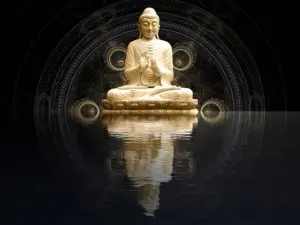
Let me return to the example of the cup.
The individual cup as a phenomenon, the blueprint of the cup, the idea of the cup, convenience, wisdom and compassion, and so on, we have now arrived at the ultimate reality.
Applying the “ripple theory” already mentioned above to the story of the cup, we see the following.
- Stone Falling into Pond: Wisdom and Compassion
- Ripple A: Convenience
- Ripple B: Idea of a cup
- Ripple C: Blueprint of the cup
- Ripple D: Each and every cup
Under convenience, there are all kinds of “useful, individual ideas” as well as ” the idea of a cup”.
These phases are also the “realness phases”.
Stages of existentiality in human beings
As far as humans are concerned, some might argue that since they are “beings who commit various evils,” it is difficult to believe that they are part of the Reality.
However, humans can shine forth their own divinity (Buddha nature) through practice.
The degree of manifestation of divinity (Buddha nature) determines spiritual rank, and the height of that spiritual rank is also the degree of “how one manifests reality.
The manifestation of divinity (Buddha nature) naturally takes a much longer time. We must cultivate it over a long period of time.
At the same time, it is a stage in which one’s own reality is being enhanced.
Thus, if we take into account that “it takes time,” we can define a human being (or existence in general) as a “temporal being.”
In contrast, the omnipresent one, the ultimate supreme deity (the fundamental Buddha), may be defined as the reality itself, a being that embraces time within itself.
Concept that all things and phenomena reflect the truth
Let’s take the above example a little further.
It is true that there are stages of actuality, and that “wisdom and compassion are assumed as the ultimate reality, which in Buddhist terms is called Eternal buddha.
Of course, the ultimate entity can be named by any other name. Or rather, names themselves have the function of “distinguishing,” so “naming” does not inherently fit in with the ultimate reality.
If there is a “distinction,” that is, it is not “ultimate.”
That is why Lao Tzu says, “There is no way to name it, but let’s call it Tao.
Let’s get back to the cup again.
As mentioned above, the cup itself was created in the following order: someone thought “a container to hold water would be convenient,” which led to the idea of individual cups, and then someone drew the blueprints for the individual cups.
But if we think about it. If we stop at just the philosophy/idea of “this kind of cup would be useful,” this would mean nothing in practical terms.
A cup is self-actualizing “being a cup” only when it finally functions as a usable cup that can be placed in front of our eyes.
Therefore, “phenomenon and idea” or, in the words of this site, “phenomenon and reality” are not separate, but rather, truth can be observed from the aspect that “reality can exist as reality” by “being phenomenon.

The following is a summary of what we can say.
- Reality can continue to be real by manifesting itself as a phenomenon
- Therefore, phenomena are not different from realities, and realities are not different from phenomena
This, in other words, is expressed in the famous phrase from the Heart Sutra, “Form is exactly emptiness. Emptiness is exactly form.
I believe that the Heart Sutra speaks of the very relationship between “phenomenon and reality” with the concept of “emptiness.
I also understand that what is known as Hegel’s difficult saying, “What is rational is real, and what is real is rational,” is “Emptiness is exactly form, Emptiness is exactly form.
The pinnacle of Mahayana enlightenment is “The Dharmadhātu of the Non-obstruction of Shi and Shi.”
As mentioned above, “Phenomenon equals Reality, Reality equals Phenomenon” = “Form is exactly emptiness. Emptiness is exactly form” is a scheme expressed on the basis of the Prajna Sutra.
But this is also said in other ways outside of the Prajna Sutra.
The Lotus Sutra speaks in terms of “Various Dharma Realities” (shoho jisso).
In this case, ” Dharma” means “existence”.
It is the thought that “the existence of all things (phenomenal) is nothing other than the realization of reality.
Also, in the Buddhāvataṃsaka Sūtra, the understanding is that the “tThe Dharmadhātu of the Non-obstruction of Shi and Shi “.
*See Wikipedia for the idea of Four Dharmadhātu of Buddhāvataṃsaka Sūtra.
At first, individual phenomena are viewed as “matters(phenomena)” and the reality behind those individual phenomena is viewed as “principle.
In the Four Dharmadhātu, the relationship between phenomena and ideals is grasped in the following stages.
- The Dharmadhātu of Shi : The phenomenal world we are experiencing
- The Dharmadhātu of Li : The real world behind the phenomenon
- The Dharmadhātu of Non-obstruction of Li against Shi : A world that works flexibly from reality to phenomenon and from phenomenon to reality.
- The Dharmadhātu of the Non-obstruction of Shi and Shi : Recognition that phenomena and reality are inseparable. The world in which phenomena themselves are freely working is rather a world of reality.
In this sequence of steps, we arrive at the last, “The Dharmadhātu of the Non-obstruction of Shi and Shi” where we still reach the realization that “phenomenon equals reality, and reality equals phenomenon.
I remember Paul Simon’s famous song, “The Sound of Silence,” with lyrics like, “The words of the subway are written by wise men.
If all phenomena work inseparably with reality, then naturally we can conclude that subway graffiti is also a manifestation of truth.

Thus, we can see that the Buddhist philosophy built on Mahayana Buddhism and Mahayana Buddhist scriptures has reached quite profound truths.
The idea is that reality and phenomena are one and the same.
I think it can be said that the idea of “the Dharmadhātu of the Non-obstruction of Shi and Shi” is the ultimate destination of the thought and philosophy of global civilization.
A consideration of the “”phenomenon equals reality, and reality equals phenomenon” theory of objectivity
I wrote that the philosophy of Mahayana Buddhism reached its zenith with the idea of the “the Dharmadhātu of the Non-obstruction of Shi and Shi”
I have used the word “in the first place” a lot in this article, but I still want to get to the bottom of it yet again here.
In the first place, why do phenomena and reality exist in a flexible manner? For what purpose?
This is a more fundamental theory of purpose. “What is it all for?” .
It is this question that will provide the opportunity to transcend Mahayana Buddhist philosophy and even Heidegger’s philosophy.
Incidentally, Heidegger has been called “the greatest philosopher of the 20th century.
In that sense, philosophy in the 21st century will be achieved by going beyond Heidegger.
To this end, I would like to consider in the next section “Why do phenomena and reality exist in tandem?
Why are there Bodhisattvas and why are there lost sentient beings?
It is also a clarification of the question, “Why didn’t the Buddha create a world of “Bodhisattvas only” from the beginning, rather than taking time to pass sentient beings to the other shore?
The “Why?” is, in fact, the very entrance to the realm of “Neo Buddhism leading to the highest enlightenment.

The Reality discloses its true nature by “phenomenalizing” it
Acknowledging an objectivist worldview
This section here is one of the central issues for Neo Buddhism to go beyond Mahayana Buddhism. This is a very important point.
The following two points summarize the discussion so far.
- Phenomena are not different from realities, and realities are not different from phenomena.
- Phenomena are real as they are, and real reality can continue to be real by manifesting itself as a phenomenon.
Next, I would like to discuss why the form of “reality and phenomenon” exists in the first place, and whether there is something purposive about it.
Being “purposive,” well, purposivism. Why does the world exist? Why do reality and phenomena exist?
It is written in various Buddhist texts that this kind of “objectivism” is inherently unfamiliar to Buddhism.
The following two arguments are often cited as evidence.
- Unlike the gods of Semitic monotheistic religions (such as Judeo-Christianity), the “Buddha” of Buddhism does not create the world.
- The Buddha preached the liberation from suffering and its practice, and was not interested in matters that are not related to individual existence, such as the origin of the world.
Please refer to the following article, which discusses this issue in detail.
*Reference article. Buddhism and Christianity – Theory to Overcome Differences and Extract Similarities
Here, I am assuming that Neo Buddhism accepts an objectivistic worldview as espoused by Semitic monotheism.
*Neo Buddhism, however, does not interpret the contents of “Creation” and “Last Judgment” in a fundamentalist way.
And I believe that taking such an Objectivist position itself will be one of the opportunities to synthesize Buddhism, Christianity, and Islam in a religious-philosophical manner.
Clarifying the objectivity of “reality-phenomenon”.
When we say “God” below, we use it to mean “the fundamental God” or “the omniscient and omnipotent God” in the religious sense. Philosophically, it is used to mean “entity.
When we think about ultimate existence, such as “what is God” or “what is entity (what really exists),” we try to objectify God (entity) as in the following diagram.
I → God (entity)
But in fact, when considering true existence in the first place, the way of thinking of “objectification” itself already involves a contradiction.
I” (or “you”) think, “What is God!” and think of it as pointing a finger at God, right?
Imagine that you are pointing at God, even if it is only in your mind. If you illustrate this scene, it will be easier to understand.
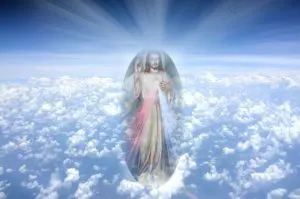
Then, even though that “God” is supposed to be omniscient and omnipotent and One, the area outside the part you pointed to (i.e., God) is excluded, right?
First, the “I” where the finger is pointing is no longer God’s domain (if it is an illustration, it means that the sky, grass, trees, and other backgrounds are not God’s domain, either).
Then this, at least, becomes a figure of God without the “I”, and the omniscience and omnipotence as the “fundamental God” is lost at that point.
*It is OK to use the word “entity” or “true existence” instead of the expression “God”.
Therefore, God is not an object that can be thought of in the dualistic “subject-object” scheme of “I – God,” but must be thought of as an entity that includes the “I” (background, natural objects, etc.) to which it is pointing.
God must also include the “subject” of I.
In a nutshell, the thesis that “God is the whole” or “truth is the whole” is derived.
In short, we must think of God (Truth) not as an entity outside of us, but as a whole that encompasses our individual existence.
This is generally called pantheism, and in Western philosophy, Spinoza presented this concept of God. And it has influenced Hegel.
But if “God (truth) is the whole,” then the next question that comes to mind is what is the composition of the whole and the individual?
It is the relationship between the Divine Reality and our individual existence in Oneness.
As preached in Mahayana Buddhist philosophy, this can be understood in the following order.
- Individual existence cannot exist by itself, but can exist temporarily as a “phenomenon” through dependent origination.
- Since this “phenomenon” is impermanent and selfless, it can also be said to be ” non-existent.
- The “sum total” of the endless chain of dependent arising is the fundamental Buddha.
Incidentally, the following Neo Buddhism approach grasps both impermanence and selflessness as dependent origination(Pratītyasamutpāda).
- Impermanence: temporal origination
- Non-self: ontological origination
*Reference article: Law of Dependent Origination(Causation / Pratītyasamutpāda) – Thinking of Dharma in “Being and Time”
The Mahayana Buddhist philosophy here is a considerably advanced truth, and the structure of reality and phenomena has been elucidated.
However, Mahayana philosophy has not yet been able to answer the “objectivity” of why reality and phenomena exist.
That philosophy, even in oneness theory, has not been able to answer the question of why, then, we have not been in a state of oneness from the beginning.
The question is, “Why don’t real entities just remain real and quietly be one without having to deliberately become a phenomenon?
Let us recall again the world picture of Spinozistic pantheism that was mentioned earlier.
It is a very serene image of God being whole.
Let us suppose that the total amount of God (the whole) is 100 in numerical value.
If God remains quietly One, 100 will remain 100 forever. Because there is no movement at all.
However, what if God wants “development”?
How can God increase 100 to 101, 102…and so on?
Actually, the question of how God can increase (develop) Himself here is the key to elucidating the significance of the “phenomenon”.
The conclusion is that God invented the Middle Way or dialectic.
Picture a dialectic diagram.
The dialectic followed the path of <thesis – antithesis -> synthesis>.
And a synthesis is not something like the thesis and antithesis added together and divided by two, but something that preserves the essential parts of the thesis and antithesis (in short, the contradiction remains a contradiction), but is synthesized in a higher concept.

Kitaro Nishida, a Kyoto School philosopher, called this “absolute contradictory self-identity.
If we assume that the values of thesis – and antithesis are each 1, the total is 1 + 1 = 2.
However, when the thesis and antithesis are synthesized to arrive at a zinthesis, the total number is more than 2.
This is because the zinthesis still contains the thesis and the antithesis and creates an even higher level concept. It can be called value-added.
This is symbolized in the way men and women are in this world.
If there is only one male and one female each, the total is two. It is obvious.
However, when a man and woman marry, they have children (sometimes).
Then somehow the total would be three, right?
The issue here is exactly why you and I exist right now.
God, the Supreme Being, cannot increase when He is alone, and 100 remains 100.
Therefore, God decided to create phenomena within Himself (in short, He created an individual, unique being).
This scheme is dialectics, and dialectics is the Middle Way.
It means that God intended dialectical development by making himself a phenomenon.
In the scheme of God = 100,
Instead of 100 being 100 in its entirety, the Supreme God created 100 individual 1s and replaced them with 100.
In this way, a dialectical dynamism is induced in each part, and a structure is created in which 1+1=3 instead of 1+1=2.
If an incremental increase occurs in each part, that means that the whole is also incremental at the same time, right?
Let me try to make the metaphor a little clearer.
Let’s say you, the being, are 100.
Suppose cell division occurs “inside” your body and one cell increases. Then the “whole” of you also increases from 100 to 101, right?
It is the same thing.
By causing the dynamics of phenomena, the Reality itself can expand (increase).
This is the meaning and the teleology of Reality’s deliberate manifestation.
…Did you understand it?
I think I have probably explained this in a way that is considerably easier to understand than most philosophy books.
I am proud to say that the points in this article show that Neo Buddhism has surpassed the philosophy of Mahayana Buddhism.
I know that it is a bit philosophical and difficult to read, but what I am saying now goes into the realm of “nothing has ever been preached to this extent before” throughout the history of the earth.
Oneness, Universe and the Emptiness
The inner reality of the development of Oneness is “to increase the total amount of Wisdom x Compassion.”
Here is a quick summary of what we have so far.
- The Reality (Supreme Being, Root Buddha) is the totality that includes the subject.
- The Reality develops itself by ” phenomena.
- The law of development is dialectics, or in Buddhist terms, the Middle Way.
It is variously referred to as “Existence,” “Supreme God,” “Fundamental Buddha…” and so on, but the content is the same. These days, it is also called “oneness.
If we stop at the understanding that “everyone is essentially one” or “I and others are one,” we will end up with a shallow discussion about oneness.
This is because it is impossible to explain “what is the basis of oneness” and “why is it necessary for each individual to exist individually in order to be oneness?
So oneness is a fundamental way of being, but it is still not static, and it encompasses various individual phenomena (us, plants and animals, minerals…etc.) inside, causing dynamics.
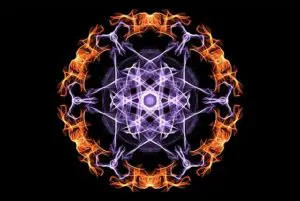
The diagram shows that this dynamics allows individual phenomena to develop, while at the same time the oneness itself develops.
Now, let’s take a closer look at the inner workings of this “development.
Neo Buddhism defines the meaning and mission of life as “the acquisition of wisdom and the practice of compassion.
And the amount of spiritual work done throughout one’s life can be expressed exactly by the formula Wisdom x Compassion.
Taking into consideration the above-mentioned “the development of phenomena is the development of reality,” the “meaning and mission of life” of each of us must in fact be linked to the purpose and mission of reality (oneness) at the same time.
The inner reality of the development of individual phenomena is, after all, the “new added value” created by Wisdom x Compassion.
Therefore, the development of Oneness (= added value) can also be defined as the amplification of the total energy of Wisdom x Compassion after all.
What is the purpose of increasing the total amount of wisdom x compassion?
I would like to go further here and ask why oneness is increasing the total amount of wisdom x compassion.
In the following article, we previously discussed the relationship between the three Dharma seals, the “marks of Buddhist teaching,” and dependent origination.
*Reference article: Law of Dependent Origination(Causation / Pratītyasamutpāda) – Thinking of Dharma in “Being and Time”
Let me review the main points as follows
- Impermanence: temporal arising → attainment of wisdom
- Non-self: ontological arising → practice of compassion
- Nirvana: a theory of happiness based on Impermanence and Non-self
This means that each of us (phenomenon) existences “feels happiness in the true sense of the word through the acquisition of wisdom and the practice of compassion.
Therefore, oneness ( reality) is also, in parallel, “securing the theory of happiness through the increase (development) of the total amount of wisdom and compassion”.
In short, when you get down to the “ultimate and then the ultimate,” you arrive at a theory of happiness in the truest sense of the word.
This is the ultimate gospel. For it would mean that Oneness, the universe, and our phenomena ultimately exist for the purpose of happiness.

New Developments in Śūnyatā Theory
Here is an update of the logic of Śūnyatā (emptiness/voidness) as it is referred to in Buddhism and Buddhist studies.
For Śūnyatā, the traditional way of understanding it would be as follows.
Since they exist by dependent origination, that is, by mutual dependence, there is nothing that can exist by itself, whether it is material or an acting of the mind.
Nothing in the world exists as an entity. That is Śūnyatā.
I do not mean to dismiss this traditional Śūnyatā understanding in general.
But on the other hand, I think that this traditional Buddhist understanding of Śūnyatā is not total, either.
After all, Śūnyatā has become almost synonymous with “empty”.
This has the efficacy of saying, “It’s empty, so there’s no need to be attached to it.
However, if you have read all the way to this point, you may have already noticed that the conventional understanding of Śūnyatā stops at an understanding of Śūnyatā that focuses only on the “phenomenal aspect”.
I see. As an individual phenomenon, the truth is that “everything is empty.
However, the whole, the totality of phenomena, the true existence (the ultimate Idea), which realizes its essence by “phenomenalizing,” is still not “empty” but literally “real.
The reality as a totality is not “empty” but “there is.
Let’s summarize.
- Individual existence as a phenomenon is Śūnyatā in its essence. Śūnyatā, in other words, is both temporally and ontologically dependent origination, which is related to wisdom and compassion.
- Further analysis of the Śūnyatā=dependent origination structure can be understood as dialectical dynamics (in Buddhist terms, the “middle way”).
- Śūnyatā dynamics (dialectics/the Middle Way) are increasing the total amount of wisdom and compassion (i.e., development), the ultimate goal of which is a true theory of well-being.
Therefore,
If we focus on the reality, the Śūnyatā is ” there”. If we focus on the phenomenon aspect, the Śūnyatā is “not there”.
Here, too, the correct answer is still to understand it in terms of the “middle way.
Even in conventional Buddhist studies, the idea (Shinkūmyōu) was that when one truly understood Śūnyatā, a wondrous being would appear.
However, the main focus of this thought (Shinkūmyōu) was not on the ontology as described above, but rather on the practical understanding of, for example, “the wisdom and compassion of the Buddha can be observed.
This is of course true, but what I would like to emphasize this time is that Shinkūmyōu is valid not only from a practical standpoint, but also from an “ontological” standpoint.
With this renewal of Śūnyatā understanding, I believe that I have surpassed the enlightenment of Guanyin (Avalokiteśvara) in the “Heart Sutra( Prajnaparamitaśvara)”.
Western/Eastern philosophical concepts of “substance” will also be updated.
The new developments in Śūnyatā theory are described above, but updating Śūnyatā theory also means updating the definition of “entity” as conventionally discussed in Western philosophy.
Since before Socrates, “substance” as “what really exists” has been variously discussed.
Substance has been discussed in the following three main areas.
- Can exist in and of itself
- That which is behind change and does not change
- An eternal and immortal entity
And, of course, in Buddhist studies, the interpretation is that “Buddhism denied the existence of any entity at all.
However, this also means that “Buddhism denied the substantiality of existence as seen from the phenomenal aspect,” and that the actual entity that is developing the phenomena still exists.
The confusion arises because we start from the idea of “that which is behind the change and does not change.
Instead, we should understand that it is the entity that discloses itself, while containing change (generating dynamism within itself).
Or, if we are concerned about “immutability,” we can update it to say that the law of the way of change (dialectics/the Middle Way) is rather immutable and universal.
Continuing from the previous item, this section is also a mountainous area of Neo Buddhism.
Positive Expansion to Three Dharma Seals
This is a long discussion, so let me try to summarize what I have said so far.
- The ultimate purpose of the reality being phenomenal is to be found in the theory of happiness.
- A new development of Śūnyatā theory is to understand Śūnyatā from both the reality and the phenomenal side.
- A proposal to update the substance concept (definition) once and for all
Check out the conventional interpretation of the Three Dharma Seals
Now, in this section, we will consider what we should do to gain the greatest harvest in our actual lives, taking into account that each of us is a “phenomenon.
Then, we will update the three Dharma Seals, which are known as the “Seals of Buddhist Teachings,” in order to determine what the Buddha Dharma (Neo Buddhism) that is compatible with the new era should be.
The conventional Buddhist and Buddhist scholarly interpretation of the Three Dharma Seals is explained as follows.
- Impermanence: All compounded things are characterized by impermanence.
- Non-self: All existing things are characterized by the lack of a self.
- Nirvana: Nirvana is characterized by uncompounded quiescence.
These interpretations will remain the same at the base throughout Theravada and Mahayana Buddhism.
In Mahayana Buddhism, the concept of nirvana has a more positive connotation, as it refers to “bodhisattvas who do not rest in nirvana, but return to this world to engage in salvation work.
In addition, I believe that Mahayana Buddhism has succeeded in giving a positive connotation to the phenomenal world with the idea of “The True Aspect of All Phenomena” as if to say, “This phenomenal world is also a manifestation of the Buddha and Truth.
But, then, it is far from certain that Buddhism, whether Theravada or Mahayana, has been able to provide an ideological basis for post-modern civilization.
Rather, it is a well-known fact that Christianity has been the driving force behind the development of the phenomenal world since Protestantism.
This is as Max Weber pointed out in “The Ethics of Protestantism and the Spirit of Capitalism”.
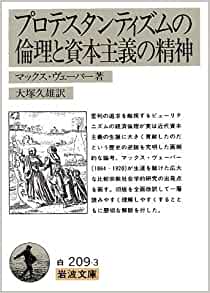
Even at the cutting edge of contemporary Buddhist thought, it is sometimes asserted that “In a situation where the post-modern Western-style civilization and competitive worldview is exposing its limitations, it is highly significant to review the “relational worldview” that Buddhism presents.
However, I think that this is, at best, only a complementary direction.
The reason for this may be that even the idea of The True Aspect of All Phenomena is only an explanation of the modalities of existence.
However, Neo Buddhism takes the position that reality (the fundamental Buddha or supreme deity) discloses itself through phenomena, so it can literally give a more positive grounding to the “phenomenal world.
I would like to update our interpretation of the Three Dharma Seals as a basic theory for this purpose.
Specific developments to the Positive Three Dharma Seals
Specifically, the following article has already prepared the basic theory.
*Reference article: Law of Dependent Origination(Causation / Pratītyasamutpāda) – Thinking of Dharma in “Being and Time”
The Three Dharma Seals interpretation based on this article is as follows.
- Impermanence: Temporal theory of transformation and change → chain of cause and effect → attainment of wisdom
- Non-self: Ontology that nothing can exist by itself → chain of relationships → practice of compassion
- Nirvana: The theory of happiness that “phenomena arise” from the perspective of “reality” through the realization of the truth of impermanence and non-self
The conventional interpretation of the Three Dharma Seals is, so to speak, a “Passive Three Dharma Seals”.
It merely explains the “state” of “the world (time) is as it is.
However, each of us, as “phenomenal” beings, is endowed with free will.
If this is so, there should be an interpretation based on subjectivity in both temporality and ontology.
Specifically, the following is an interpretation based on subjectivity.
- Impermanence: Transformation and change proactively (temporality theory)
- Non-self: Proactively building relationships (ontology)

Positive Impermanence
From Impermanence, I will tentatively name it “Positive Impermanence”. Initiative Impermanence. It means “to cause impermanence in various actions by oneself.
It goes without saying, however, that there are “good impermanence and bad impermanence” when it comes to causing impermanence.
As preached in the Seven Buddhist Chants, the Buddhist teaching is to “do all kinds of good,” so positive impermanence means “causing good impermanence.
- At the micro level, it is about good self-improvement.
- At the macro level, we are committed to making innovations and inventions that are useful to the world.
These two directions are important.
When it comes to innovation, the economist Schumpeter and the management scientist P. Drucker are well known.
Schumpeter’s main emphasis on innovation seems to be on “creating new added value through the combination of dissimilar things”.
On the other hand, innovation, as Drucker argues, seems to focus on “systematically discarding and reconstructing past successes.
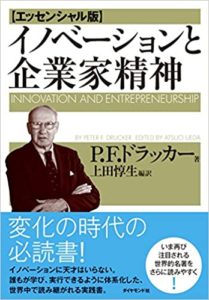
Although we will not go into the specifics of each of these theories, we hope that you will understand that “positive impermanence” is at least directionally compatible with modern economics and business administration.
This is the “sanctification of labor,” in religious studies terms.
In any case, in “positive impermanence,” innovation = innovation, in short, first of all, involves the acquisition of wisdom.
This is, of course, also true for individual innovation, or self-transformation.
Positive Non-self
If we take Neo Buddhism’s definition of compassion as “the act of expanding wisdom,” then “positive Non-self” would be more marketing-oriented, as it expands the wisdom acquired through “positive impermanence.
In this sense, it is consistent with contemporary marketing theory, or rather, it works to give direction to marketing theory.
There is “good marketing” and “bad marketing,” you know.
If you strategically spread the good (product/knowledge), the more you do it, the more heavenly the marketing will be, but if you strategically spread the bad (product/knowledge), the more hellish the marketing will be.
In traditional marketing theory, this “good/bad” premise would be a largely ignored situation.
Positive Non-self will allow us to provide a theoretical foundation for good/bad value criteria for marketing.
In the first place, such ethical foundations should have been the work of religion and philosophy.
Positive Nirvana
- Positive Impermanence: proactively causing change → Wisdom
- Positive Non-self: proactively build relationships → Compassion
Positive nirvana is defined as the theory of the Buddhist land that we actively transform the phenomenal world in which we live into the Buddhist land through the wisdom x compassion formula, and that participating in such activities is itself a true theory of the happiness.
The promotion of the creation of a Buddhist land based on wisdom and compassion by individuals, corporations, communities, and society is consistent with the increase in the total amount of wisdom and compassion of the reality (Buddha) itself.
This is because an increase in one part means an increase in the whole that includes that part. The root Buddha (supreme deity) itself is self-developing and self-expanding.
As for the Positive Three Dharma Seals, I believe that this is the starting point for an infinite number of individual discussions.
In this article, I have attempted to clarify the relationship and purpose between Oneness, or the One Whole (reality), and the individual things (phenomena) that compose it, mainly using traditional Buddhist theory as a guide and updating it for the new era.
If you have read this far, you already know that oneness does not mean so-called “non-dualism,” a monism that eliminates dualism (or pluralism).
The image is that inside of the “one” shines various personalities as “many,” and that the “one” itself, which encompasses many, is dynamically generated and developed.
I would be happy if those who agree with the idea of Neo Buddhism would let each theory blossom in their respective fields and specialties.


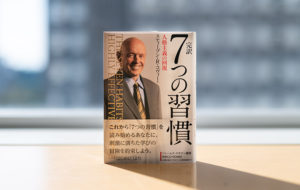
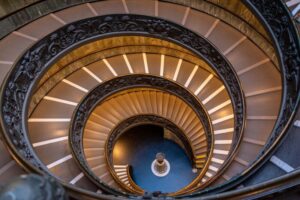



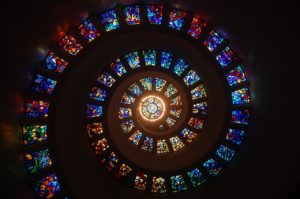


Comments